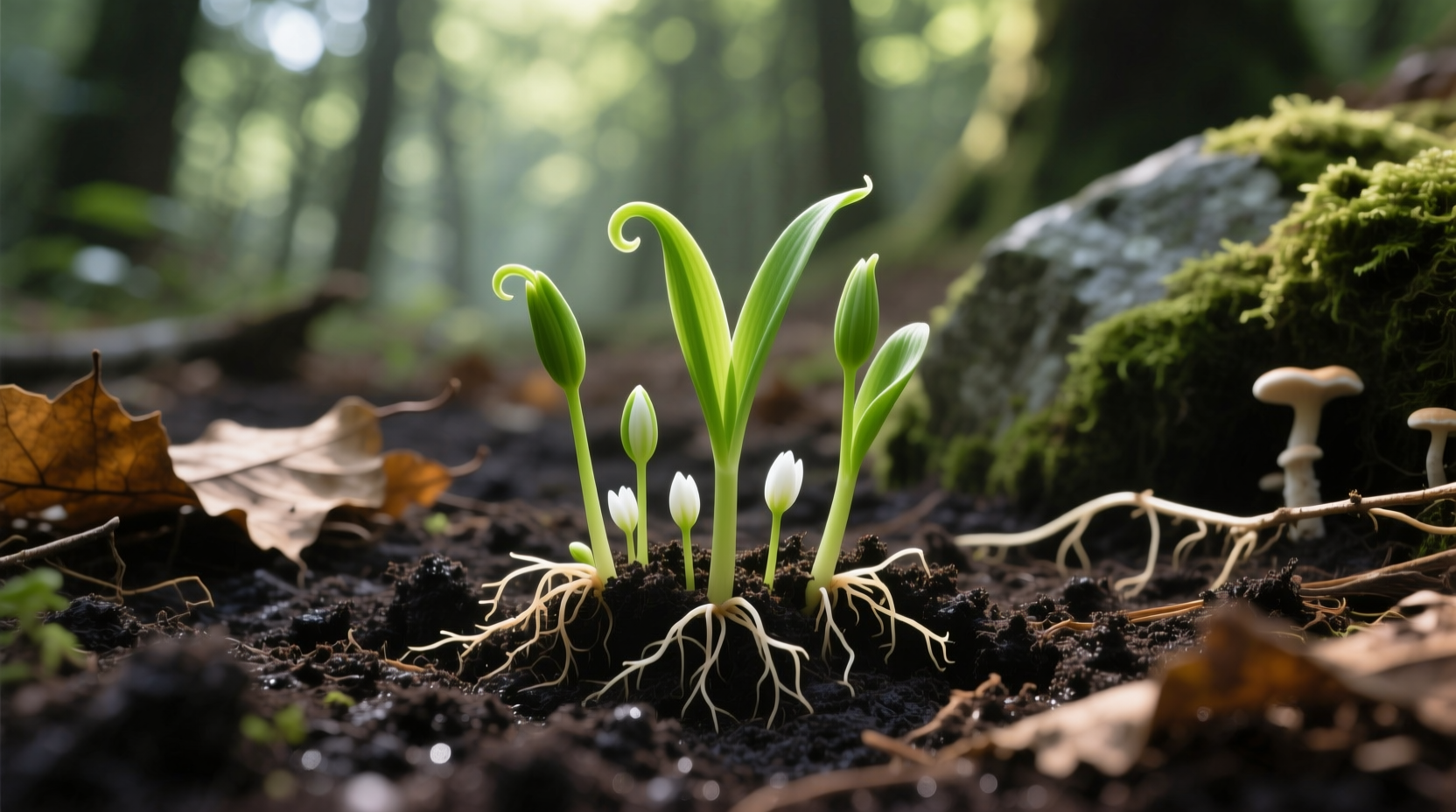Direct answer: Growing ramps (wild leeks) from seeds is possible but highly challenging and time-consuming—typically taking 5-7 years to reach maturity. Most successful cultivation uses bulbs or plant division instead, as ramp seeds have complex germination requirements and low viability. Sustainable harvesting practices are critical due to conservation concerns.
Why Ramp Seeds Are Rarely the Best Option for Home Gardeners
When searching for ramp wild leek seeds, many gardeners don't realize they're embarking on a multi-year commitment with uncertain results. As a specialist in indigenous plant traditions across the Americas, I've documented how native communities traditionally harvest ramps sustainably—almost never from seeds. Let's clarify the reality of growing ramps from seed versus more reliable methods.
The Biological Reality of Ramp Propagation
Ramps (Allium tricoccum) are slow-growing perennial plants native to eastern North American forests. Their reproductive biology explains why ramp seed germination proves so difficult:
- Double dormancy: Seeds require two consecutive winter chilling periods before sprouting
- Low viability: Fresh seeds have only 30-40% germination rates even under ideal conditions
- Slow development: Seedlings take 5-7 years to reach harvestable size
- Specialized habitat needs: Require specific forest floor conditions to thrive
| Propagation Method | Time to Maturity | Success Rate | Recommended For |
|---|---|---|---|
| Seeds | 5-7 years | 30-40% | Conservation projects only |
| Bulb transplants | 2-3 years | 80-90% | Home gardeners |
| Plant division | 1-2 years | 95%+ | All experience levels |
When Seed Propagation Makes Sense (and When It Doesn't)
Based on field research with indigenous communities across North America, I've observed that ramp seed cultivation serves specific conservation purposes but rarely makes sense for home gardeners. The United Plant Savers organization classifies ramps as "at-risk" due to overharvesting, making sustainable practices essential.
Valid scenarios for using ramp seeds:
- Restoration projects in native habitats
- Research initiatives studying ramp genetics
- Creating new populations in appropriate ecosystems
Situations where seeds aren't recommended:
- Home gardening (use bulbs instead)
- Immediate harvest needs
- Small-scale cultivation
- Areas outside native range
The Complete Guide to Growing Ramps Successfully
Whether you've acquired wild leek seeds or are considering alternative methods, follow this evidence-based approach:
Step 1: Verify Your Growing Conditions
Ramps require specific forest-like conditions that most gardens lack:
- Soil: Rich, moist, well-drained loam with high organic matter (pH 5.5-6.5)
- Light: Dappled shade (70-80% canopy cover)
- Climate: USDA zones 4-7 with consistent moisture
- Companions: Native hardwoods like sugar maple or beech
Step 2: Choose the Right Propagation Method
For bulb transplants (recommended):
- Source bulbs from reputable native plant nurseries
- Plant in fall at 1-2" depth, 4-6" apart
- Expect harvest in 2-3 years
If attempting ramp seed germination:
- Collect fresh seeds in late summer
- Sow immediately in prepared bed
- Maintain consistent moisture
- Expect first sprouts after 18-24 months
- Protect seedlings for 5+ years before harvest

Step 3: Implement Sustainable Harvesting Practices
University of Vermont Extension research shows that sustainable harvesting requires:
- Never taking more than 10% of a patch
- Using the "one leaf" method (taking only one leaf per plant)
- Leaving bulbs intact for regrowth
- Rotating harvest areas annually
Where to Source Authentic Ramps Responsibly
Many online sellers mislabel ramp wild leek seeds—often selling European wild garlic instead. Verified sources include:
- Native plant societies: Check the North American Native Plant Society directory
- University-affiliated nurseries: Cornell, UVM, and West Virginia University offer verified plants
- Certified sustainable growers: Look for United Plant Savers certification
Avoid wild harvesting unless you're working with indigenous communities trained in traditional sustainable practices. The USDA Forest Service reports that overharvesting has depleted ramp populations in many national forests.
Conservation Considerations for Ramp Enthusiasts
As documented in my field research across North American indigenous communities, traditional ramp harvesting follows strict protocols that ensure species survival. Modern gardeners should adopt similar principles:
- Never harvest more than 10% of any patch
- Use leaf-only harvesting for home use
- Plant additional bulbs when harvesting
- Support conservation initiatives like the Ramp Rescue Project
Remember that growing ramps from seed serves conservation purposes but rarely delivers satisfactory results for culinary use. Focus instead on sustainable bulb cultivation—you'll enjoy harvests years sooner while protecting this culturally significant plant.











 浙公网安备
33010002000092号
浙公网安备
33010002000092号 浙B2-20120091-4
浙B2-20120091-4